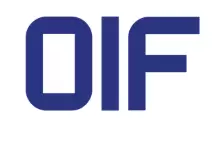OIF has commenced work on four new projects.
- Management of Smart Optical Modules Project: Current system management paradigms require tight coupling between hosts and pluggable optical modules. As module capabilities advance, host software must be updated. This additional development cycle delays the deployment of these advanced capabilities. In multi-vendor environments, it is becoming challenging for the various equipment developers to implement and track all the advanced features implemented by the various module vendors. There is also the requirement by end users for disaggregation of IPoDWDM solutions. This new OIF project will result in a white paper describing a new paradigm that decouples the cont
roller from host software development, enabling faster realization of advanced module capabilities. - Energy Efficient Interfaces Framework Project: This umbrella framework project will study energy-efficient electrical and optical interfaces (sometimes referred to as “Linear” or “Direct Drive”) necessary to support the energy-efficient application requirements prioritized by OIF’s Physical Layer User Group Working Group.
- 800G/1.6T FlexE Project: This project will define interoperable next-generation FlexE specifications for 800G/1.6T PHY rates for mobile backhaul and data center interconnect applications. It will result in the revision of the OIF-FLEXE-02.2 implementation agreement by adding support for 800Gb/s and 1.6Tb/s FlexE PHYs.
- Digital Twin Optical Network as an Enhanced Network Operation Project: Digital twins can enhance and accelerate network transformations, systems and operational process integrations. Verifying the accuracy of configuration or optimization orders provided by Digital Twin Network (DTN) systems is a challenge. This project will result in a white paper that identifies the challenges and technical requirements for digital twin modeling as an enhanced optical network operation. It will specify the relationship between the DTN and network management and control, interface operation, input/output data requirements and data collection – essential steps to broaden the adoption of digital twin use in optical networks.
At last month's hybrid Q2 2023 Technical and MA&E Committees meeting held in Budapest, Jia He, Huawei Technologies Co., Ltd., was re-elected as Chair of the Networking & Operations Working Group and Tom Huber, Nokia, was appointed as Physical & Link Layer Working Group Protocol Vice Chair.















